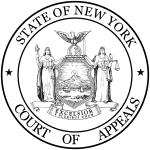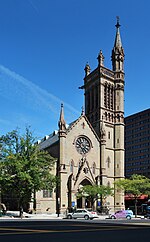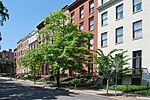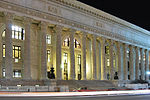Roman Catholic Diocese of Albany
1847 establishments in New York (state)Companies that filed for Chapter 11 bankruptcy in 2023Organizations based in Albany, New YorkReligious organizations established in 1847Roman Catholic Diocese of Albany ... and 2 more
Roman Catholic dioceses and prelatures established in the 19th centuryRoman Catholic dioceses in the United States

The Roman Catholic Diocese of Albany (Latin: Diœcesis Albanensis) covers 14 counties in Eastern New York (Albany, Columbia, Delaware, Fulton, Greene, southern Herkimer, Montgomery, Otsego, Rensselaer, Saratoga, Schenectady, Schoharie, Warren, and Washington Counties), including the south west corner of a 15th county (Hamilton). Its Mother Church is the Cathedral of the Immaculate Conception in the city of Albany.
Excerpt from the Wikipedia article Roman Catholic Diocese of Albany (License: CC BY-SA 3.0, Authors, Images).Roman Catholic Diocese of Albany
Eagle Street, City of Albany
Geographical coordinates (GPS) Address Website Nearby Places Show on map
Geographical coordinates (GPS)
| Latitude | Longitude |
|---|---|
| N 42.651666666667 ° | E -73.754444444444 ° |
Address
Albany City Hall
Eagle Street 24
12207 City of Albany
New York, United States
Open on Google Maps










